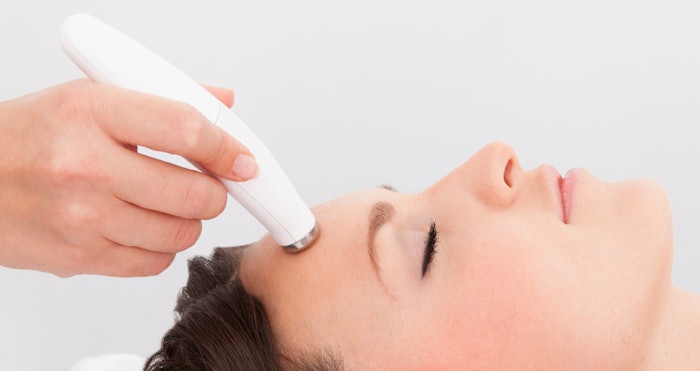
No esthetician or beauty professional sets out to hurt their clients. Still, it can be easy to forget that relaxing, pampering skin care and beauty services are capable of harm. A client may have an unexpected allergic reaction to a facial, or you might get distracted and double-dip your wax applicator. Plus, even highly trained, certified estheticians are exposed to false or exaggerated claims of injury.
Enduring lawsuits and inflicting harm are not foregone conclusions in the beauty industry. There are best practices estheticians and salon and spa owners can use to mitigate the risks of providing skincare and beauty services.
1. Communicate Openly and Honestly
Beauty and wellness trends catch on for a reason-it's exciting to consider the possibilities of cryotherapy, body wraps or therapeutic massages. If you learn a new technique or offer a new service to a customer, you should understand the risks of that service and communicate them to clients.
Consider microdermabrasion. Though it has become common, unfamiliar clients may not be prepared for the short-term, negative effects of the treatment. It is critical to ensure customers are aware that they may have red, irritated, sun-sensitive skin for a full day. In this instance, clear communication might make the difference between a satisfied client and a scared one. Body wraps are having their moment-clients are excited when they can see a near-instant change in the circumference of their thighs, and everyone enjoys the soft skin that follows. Wraps are generally safe, but there have been instances of technicians wrapping up clients tightly and leaving the room. Ensure clients know they should share their comfort levels with you, and never leave a client unattended. Some spas are making promises they cannot keep about the long-term slimming effects of a wrap. False advertising can not only violate clients' trust, but it can lead to lawsuits in extreme cases.
2. Write it down.
Though it may seem surprising at first, careful documentation is one of the best ways to protect clients or yourself. This can help prevent problems from occurring in the first place and provide valuable support if a patron brings a lawsuit against your business. It can also more easily expose false claims.
Record services. Keep records of clients (including walk-ins) and the details of the services they received. At a minimum, record the name of the customer, person performing the treatment and the date and time it was performed.
Client history. Always obtain a history from the patron before performing a facial, noting any allergies, medical conditions and past skin conditions.
Employee files. Maintain up-to-date records on past employees, complete with copies of operators' licenses.
Document accidents. Business owners should keep a general accident report file, with blank report forms and a record of everything from slips and falls to wax burns. If an accident happens, it should be documented immediately. If the accident results in a lawsuit, do not try to handle it on your own-call a lawyer and your insurance broker.
3. Evaluate Your Insurance Coverage.
I know when it comes to dreaded small business tasks, reviewing your insurance policies ranks up there with doing your taxes. But your current insurance policy may leave you exposed in challenging times. If you have ever had to file an insurance claim for a spa, you know how critical the right coverage can be.
Here's what may be missing from your insurance coverage:
Professional liability coverage. This is crucial for estheticians, massage therapists and nail techs. Essentially, it provides coverage for any claims of alleged negligence, errors or omissions in the performance of your professional services. For example, this would cover you for lawyer's fees and court expenses if a customer sues you over an allergic reaction to a product used during a facial.
The right limits. A limit is the technical term for the total amount the insurer will pay the insured (your spa) if you file a claim. With some generic business owner's policies-the standard insurance product marketed to small businesses-you can max out your yearly aggregate limit with one lawsuit. An insurance package designed for spas can provide separate limits for separate policies, e.g. professional liability and property.
Expert claims handling. If you do ever have to file an insurance claim, you will probably have a better experience working with claims professionals who know the beauty industry. Their knowledge helps get your claim handled expediently and accurately. Plus, it's nice to work with someone who actually knows what microdermabrasion means.
To ensure you are properly covered, work with a specialty insurance provider. SASSI Insurance has been working with and growing with the beauty industry for nearly 90 years. Our staff specializes in providing insurance coverage and claims handling for spas and salons. That's why we can offer general liability, professional liability, commercial property and (in a growing number of states) workers' compensation coverage designed around your needs.
To discuss your insurance and risk management needs, contact Kathy Lopez, account manager, at 631-666-5050, ext. 162. She can explain coverage, limits and claims handling in more detail.
About the author
Sean Brownyard is executive program manager for SASSI, the Salon and Spa Specialty Insurance program at Brownyard Group. He has a decade of experience insuring the beauty industry, and two decades of experience in the insurance industry. He can be reached at [email protected].
Disclaimer:
The above paid-for content was produced by and posted on behalf of the Sponsor. Content provided is generated solely by the Sponsor or its affiliates, and it is the Sponsor’s responsibility for the accuracy, completeness and validity of all information included. Global Cosmetic Industry takes steps to ensure that you will not confuse sponsored content with content produced by Global Cosmetic Industry and governed by its editorial policy.










